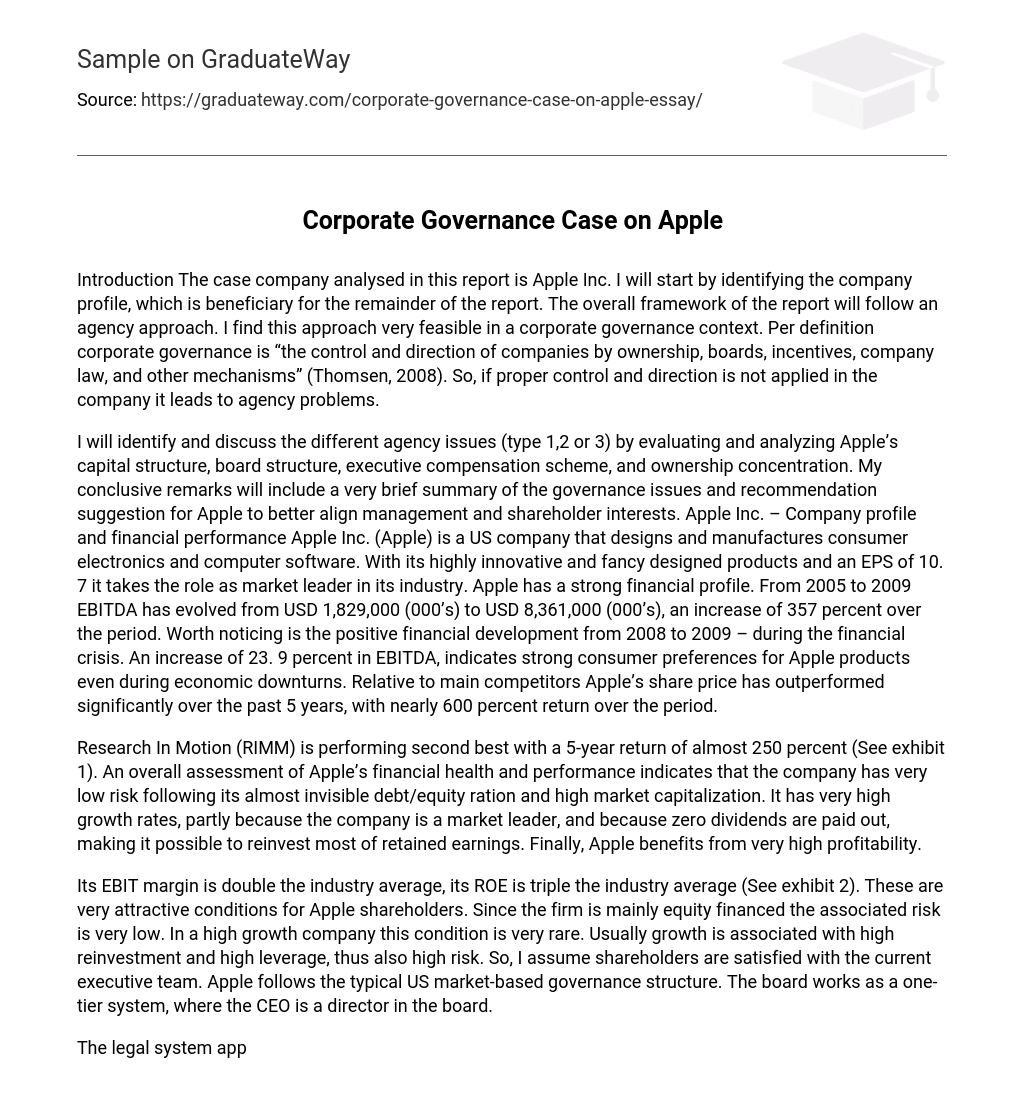Introduction: This report centers on Apple Inc. and intends to furnish a vital company profile for future analysis. The approach employed in this report is an agency approach, which is particularly suited when scrutinizing corporate governance. Corporate governance entails the administration and guidance of companies through ownership, boards, incentives, company law, and other means (Thomsen, 2008). Henceforth, the existence of insufficient control and direction within a company results in agency problems.
The purpose of this analysis is to evaluate various agency issues (type 1, 2 or 3) by examining Apple’s capital structure, board structure, executive compensation scheme, and ownership concentration. Additionally, recommendations will be provided for Apple to align management and shareholder interests based on a concise summary of the governance issues.
Apple Inc. is a US-based company known for its specialization in consumer electronics and computer software design and production. It holds the dominant market position in its industry with highly innovative and visually appealing products, as well as an impressive earnings per share (EPS) of 10.7. The company has shown strong financial performance indicated by its growing EBITDA (Earnings Before Interest, Taxes, Depreciation, and Amortization). From 2005 to 2009, Apple’s EBITDA increased by an impressive 357 percent from USD 1,829 million to USD 8,361 million. Notably during the global financial crisis in 2008-2009,
Apple experienced positive financial growth with a significant increase of
22 percentin EBITDA.
This demonstrates robust consumer demand for Apple products even during economic downturns.
Over the past five years,http://www.businessweek.com/technology/content/feb2008/tc20080227_160304.tm
ihttp:/financeyahoocomqsaapl/li>
Fama, F. & Jensen, M. (1983). “Separation of ownership and control.” Journal of Law and Economics 26, 301-325.
Gugler, K. & Yurtoglu, B. (2002). “Corporate governance and dividend pay-out policy in Germany.” European Economic Review 47. Pp. 731-758.
Hansen, M., Ibarra, H., & Peyer, U. (2010). “The Best-Performing CEOs in the World.” Harvard Business Review. Feb. 2010.
Hansmann, H. (1996). “The Ownership of Enterprise.” Harvard University Press, Cambridge Mass.
Hermalin, B. & Weisbach, M. (1997). “Endogenously chosen boards of directors and their monitoring of the CEO.”
The American Economic Review (forthcoming) includes a review by D. Higgs (2003) on the role and effectiveness of non-executive directors, as well as a study by M. Jensen (1986) on the agency costs of free cash flow, corporate finance, and takeovers. Additionally, S. Myers (2001) explores capital structure in The Journal of Economic Perspectives (15(2), pp. 81-102), and C. Sponholtz (2005) conducts a study on the stock market’s reaction to simultaneous dividend and earnings announcements at the University of Aarhus. The appendix includes exhibits 1-8 from various sources such as infinancials.com and apple.com/investor. [1], [2], [3], [4], [5] offer additional information on financial data and relevant individuals.





